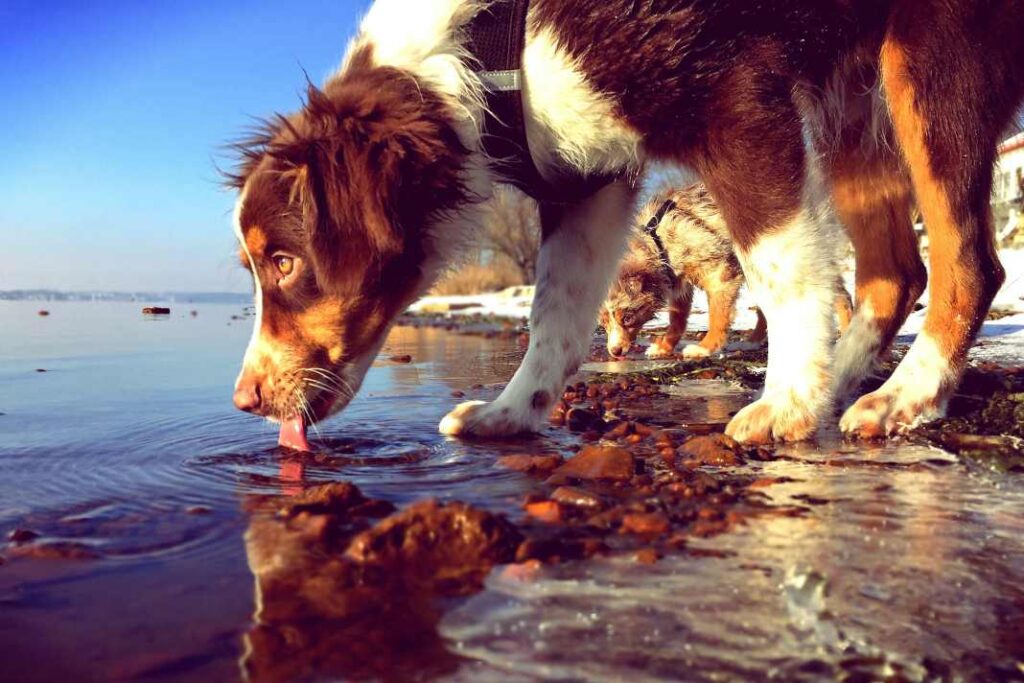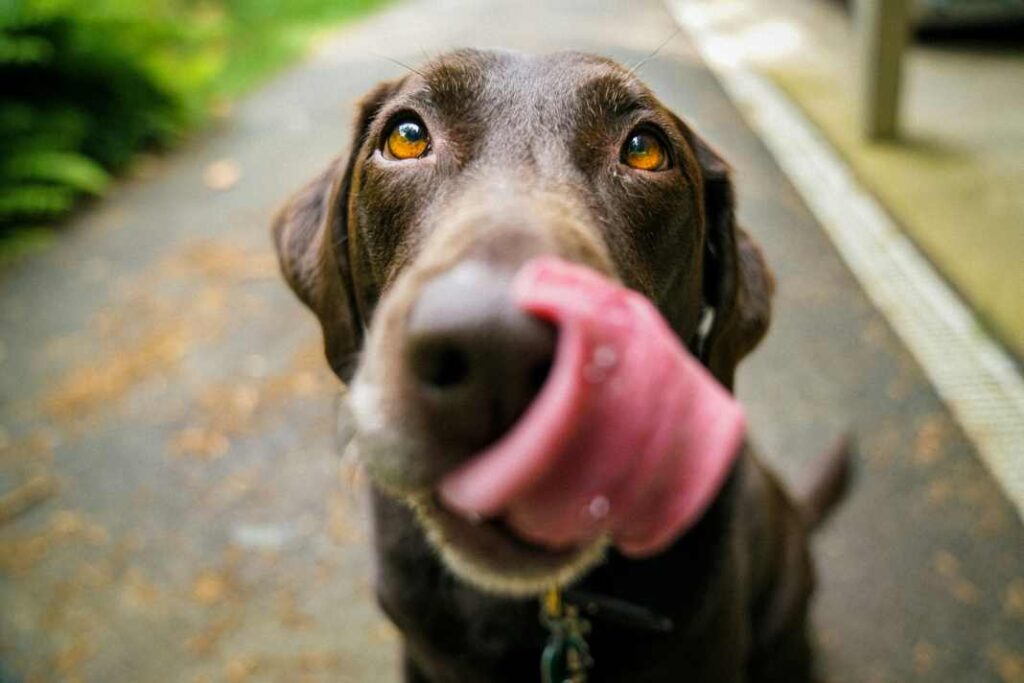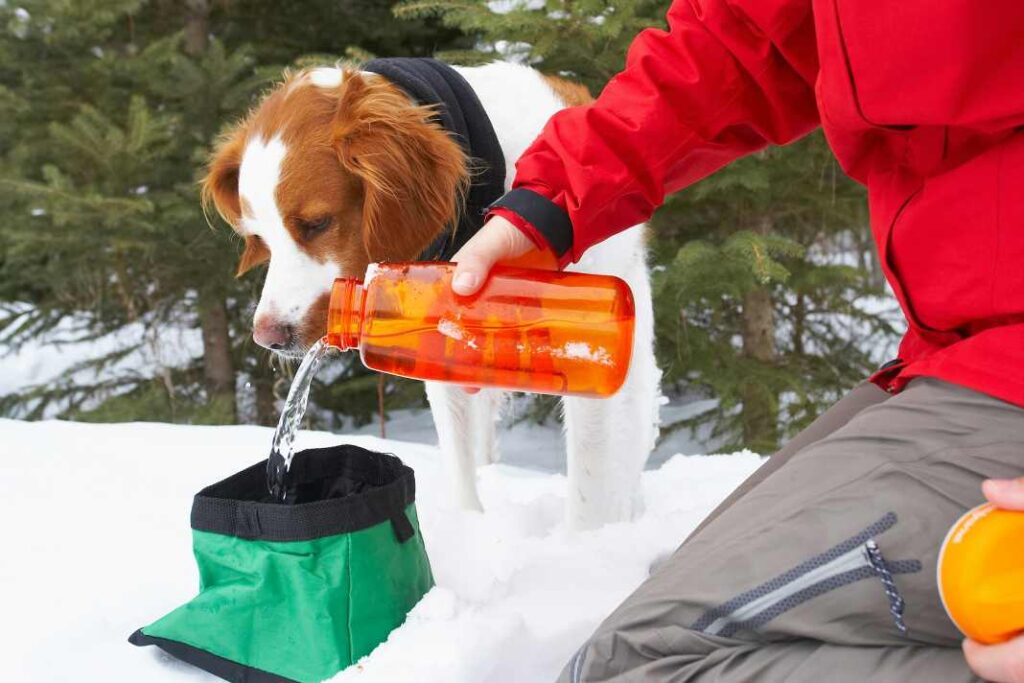Unveiling what your dogs increased thirst could really mean for their health: a thorough guide exploring the causes, symptoms, and potential health conditions linked to excessive thirst.
Learn how to monitor your furry companion’s water intake and determine when it’s time to seek veterinary advice, ensuring their optimal well-being.
Introduction to Excessive Thirst in Dogs
Observing a notable increase in your dog’s water consumption can initially seem innocuous, perhaps attributed to warmer weather or a more active day than usual. However, this behavioral change, specifically excessive thirst, could be indicative of more serious health concerns that merit careful consideration and potentially immediate action.
A healthy guideline for canine hydration suggests that dogs require roughly an ounce of water per pound of body weight each day. Any substantial deviation from this guideline, where a dog’s thirst seems insatiable or significantly increased, necessitates a deeper investigation.
Notice your dog’s thirst levels rising? It might be more than just the weather or increased activity
Dehydration in dogs, which can be prompted by a variety of factors including the heat, vigorous physical activity, certain illnesses, and the type of diet being fed, often presents itself through an increased thirst among other symptoms.
It’s crucial for dog owners to be vigilant and perceptive of such signs. Recognizing and understanding the implications of excessive thirst is not just about quenching it but identifying the root cause.
For instance, a dog persistently seeking out water, even in cooler temperatures and without increased activity, could be displaying the early warnings of conditions such as diabetes or kidney issues.
Consequently, acknowledging and responding to these symptoms promptly can be instrumental in preventing more severe health complications.

Understanding Normal Water Intake for Dogs
Understanding the normal water intake for dogs is pivotal in ensuring their health and vitality. Dogs, much like humans, need adequate hydration to facilitate their bodily functions.
The general guideline suggests that dogs should consume approximately 1 ounce of water intake per pound of body weight each day. This benchmark serves as a starting point for pet owners to gauge whether their dog is drinking an appropriate amount of water.
However, it’s essential to recognize that several variables can influence a dog’s hydration needs. For instance, a dog’s age can play a significant role; puppies, being more active, might require more water compared to older dogs who may lead a more sedentary lifestyle.
“Did you know dogs need about 1 oz of water per pound of body weight daily?
Variations in a dog’s daily water intake can also be attributed to environmental factors and dietary habits. A dog living in a warmer climate or experiencing a particularly hot day will naturally need to drink more water to cool down and compensate for the loss of fluids through panting.
Similarly, dogs on dry kibble diets may exhibit increased thirst compared to those on wet food diets, due to the lower moisture content in dry foods. Medications can also affect a dog’s thirst mechanism, with some causing an increase in water consumption as a side effect.
Therefore, monitoring your dog’s water intake and being mindful of these influencing factors is critical. Adjustments to their water availability might be necessary to ensure they are adequately hydrated, promoting their health and preventing potential issues related to dehydration.
Common Causes of Increased Thirst in Dogs
A dog’s diet significantly influences its water intake, with certain types of food, especially dry kibble or meals high in sodium, prompting them to drink more. For instance, if a dog accustomed to a moist, fresh food diet suddenly switches to a dry food formula, the change can lead to an increased thirst.
This is because dry foods contain less inherent moisture, requiring the dog to seek additional water to stay hydrated. Similarly, foods that are high in sodium can disrupt the natural balance of electrolytes in the dog’s body, necessitating increased water intake to dilute the excess salt and maintain homeostasis.
This adjustment is crucial as excessive salt intake without adequate water can lead to salt poisoning, a condition that can have severe consequences for a dog’s health.
Monitor water intake closely after dietary changes to prevent health issues like salt poisoning.
Another dietary factor contributing to increased thirst in dogs is the presence of certain ingredients or additives in their food that may stimulate a need for more water.
Dogs, like humans, can have varied reactions to different food compositions, and what might cause excessive thirst in one dog may not affect another. This variability underscores the importance of closely monitoring any changes in a dog’s eating habits, the type of food consumed, and its corresponding impact on water consumption.
Owners should observe their pets for signs of increased thirst following any dietary change, as this could be a dog’s way of communicating its discomfort or the onset of a dietary imbalance. It’s also a reminder of the significance of providing access to fresh, clean water at all times to support their health and well-being.
Health Conditions Leading to Excessive Thirst in Dogs
Several underlying health conditions can prompt an unusual increase in thirst among dogs, a condition medically referred to as polydipsia. For instance, Diabetes Mellitus is a common cause, wherein elevated blood sugar levels compel the body to flush out the excess glucose through increased urination.
This process inevitably leads to a significant loss of fluids, causing the dog to drink more water to compensate. Similarly, Kidney Disease affects a dog’s ability to conserve water due to the kidneys’ impaired functionality, resulting in a heightened need for hydration to prevent the adverse effects of dehydration.
Elevated urination, dehydration risk, and hormonal imbalances are key signs.
Moreover, Cushing’s Disease, which is marked by an overproduction of cortisol by the adrenal glands, can significantly disrupt a dog’s natural balance, leading to an increased thirst as well as a noticeable increase in urination frequency.
Another notable condition is Pyometra, a serious and potentially life-threatening infection of the uterus in female dogs. This condition can lead to several symptoms including a marked increase in water consumption.
It’s crucial for pet owners to recognize these signs early as Pyometra requires urgent veterinary attention. Each of these conditions underscores the importance of monitoring your pet’s water intake and seeking veterinary advice when changes occur, as they can be indicative of serious health issues.
Symptoms of Dehydration in Dogs
Dehydration in dogs can manifest through various symptoms, each indicating a need for immediate attention and care. The initial signs might appear subtle, such as an increased thirst or dry gums, but they can quickly escalate to more severe symptoms like lethargy or a noticeable loss of skin elasticity.
For instance, a simple pinch test, where the skin is gently lifted on the back of the dog’s neck, can reveal dehydration if the skin does not promptly return to its original position. This loss of skin elasticity, coupled with dry, sticky gums and the production of thick, mucousy saliva, signals a significant reduction in the body’s hydration levels.
Look out for early signs like increased thirst, dry gums, and loss of skin elasticity.
Furthermore, dehydration can exacerbate or coincide with other alarming symptoms such as vomiting, diarrhea, excessive panting, and an overall state of lethargy or weakness. These signs indicate that the dog’s body is struggling to maintain normal functions due to the lack of adequate fluids. In severe cases, dehydration can lead to a critical condition requiring urgent veterinary care to prevent further complications.
Therefore, dog owners should be vigilant in observing their pets for any signs of dehydration, especially during hot weather, after prolonged exercise, or if the dog is experiencing health issues like fever or diarrhea.
Early detection and response to these symptoms can be crucial in preventing dehydration from worsening, ensuring the well-being of the canine companion.

Monitoring Your Dog’s Water Intake
Monitoring your dog’s water intake is a proactive step towards ensuring their health and well-being, acting as an early warning system for potential health issues. Establishing a consistent routine for this task can help you become familiar with your dog’s normal drinking habits, making it easier to spot any unusual changes.
A practical method for keeping track of how much water your dog drinks is to use a water diary or even mark levels on their water bowl or a specific water bottle dedicated to them. This daily log will not only help you notice any gradual increases in water consumption but also identify any sudden spikes in thirst.
For instance, a dog that consistently drinks around 30 ounces of water daily but abruptly starts drinking 50 ounces may be signaling a health problem that requires immediate attention.
Tracking daily water intake can alert you to changes signaling possible health issues
Increased thirst in dogs can be a sign of underlying health issues, such as dehydration, urinary tract infection, kidney failure, diabetes mellitus, or Cushing’s disease.
Additionally, paying attention to the context of increased water intake can provide valuable clues. Factors such as hotter weather or increased physical activity might naturally lead to higher water consumption.
However, if these environmental or lifestyle changes do not apply, and you notice a significant and unexplained increase in your dog’s thirst, it could be indicative of conditions like diabetes, kidney disease, or other health issues that lead to increased thirst.
Therefore, it’s crucial to not only monitor how much water your dog is drinking but also to consider the circumstances surrounding any changes in their drinking habits. This vigilant approach allows for timely intervention, potentially averting more serious health complications.
When to Seek Veterinary Advice for Excessive Thirst
Recognizing when to consult a veterinarian for your dog’s excessive thirst is paramount to ensuring their health and well-being. If your dog’s increased thirst is paired with other alarming symptoms such as vomiting, diarrhea, lethargy, or drastic changes in behavior, it’s time to seek professional advice.
These symptoms, in conjunction with excessive thirst, could indicate a range of underlying health issues, from kidney disease to diabetes, that require immediate attention. For example, a dog with diabetes may exhibit an insatiable thirst due to the body’s inability to regulate blood sugar levels, leading to excessive urination and dehydration.
If your dog shows excessive thirst along with symptoms like vomiting, diarrhea, or lethargy, it’s time to consult a vet
Upon visiting the vet, you might expect a series of diagnostic tests to pinpoint the exact cause of your dog’s symptoms.
Bloodwork can reveal signs of diabetes or kidney issues, while urinalysis might indicate a urinary tract infection or other conditions affecting the kidneys. Imaging tests such as X-rays or an ultrasound could be necessary to assess the condition of your dog’s internal organs visually.
Early detection through these diagnostics is crucial, as it allows for a more targeted treatment approach, potentially averting more severe complications. Therefore, acting swiftly and consulting with your vet at the first sign of concern can significantly impact your dog’s health outcome.

Preventing Dehydration and Managing Excessive Thirst
Preventing dehydration in dogs is a critical aspect of pet care, particularly during the summer months or in warmer climates where the risk is heightened. Ensuring that your dog has constant access to fresh, clean water is fundamental.
For dogs that spend a lot of time outdoors or are particularly active, consider using spill-proof water bowls to prevent accidental water loss. On days with extreme heat, adding ice cubes to their water can make it more appealing, helping to increase their fluid intake. This simple adjustment not only keeps the water cool but can also serve as a playful incentive for your dog to drink more.
Ensure constant access to fresh water, use spill-proof bowls, and consider adding ice cubes for appeal
When a dog exhibits signs of excessive thirst, it’s essential to consider the root cause, which may range from dietary influences to more serious health conditions like diabetes or kidney disease. Depending on the diagnosis, treatment options will vary.
For instance, a dog with diabetes may require insulin injections alongside a carefully monitored diet, whereas a dog suffering from dehydration due to excessive heat may only need fluid therapy to replenish lost electrolytes and water.
Regular veterinary visits play a crucial role in both the early detection of underlying health issues causing increased thirst and in guiding the appropriate course of treatment. These check-ups also provide an opportunity for pet owners to discuss any changes in their dog’s drinking habits, ensuring any concerns are addressed promptly to maintain the dog’s health and quality of life.
Concluding What Your Dogs Increased Thirst Could Really Mean
Being proactive about your dog’s health involves more than just routine check-ups and vaccinations; it also includes paying close attention to their daily habits, such as water consumption. Monitoring your dog’s water intake can provide early indications of health issues, making it easier to address potential problems before they escalate.
For instance, a sudden increase in thirst can be a sign of diabetes mellitus in dogs, where the body fails to regulate blood sugar levels, leading to excessive urination and, consequently, an increase in thirst.
Know your dog’s normal water needs & consult your vet for any changes.
By keeping an eye on how much water your dog is drinking, you can catch such changes early and consult your veterinarian for a proper diagnosis and treatment plan.
Understanding the underlying causes of excessive thirst in dogs is equally important. Diseases like kidney failure or conditions such as Cushing’s disease are known to cause polydipsia, or increased thirst, among other symptoms.
By recognizing these signs and seeking veterinary advice promptly, you can ensure your dog receives the necessary care to manage their condition effectively.
It’s also beneficial to familiarize yourself with the basic guidelines for daily water intake based on your dog’s weight, as this knowledge can help you identify when your pet’s thirst is outside the norm. Ultimately, maintaining open communication with your vet and being vigilant about your dog’s hydration habits are key to ensuring their long-term health and happiness.
Related Topics:
Unraveling the Mystery of Why Your Dog Is Always Thirsty
Hydrate Hound: The Essential Guide to Keeping Your Dogs Water Bowl Full
Keeping Your Pup Hydrated: How Much Water Do Dogs Need to Drink Every Day




